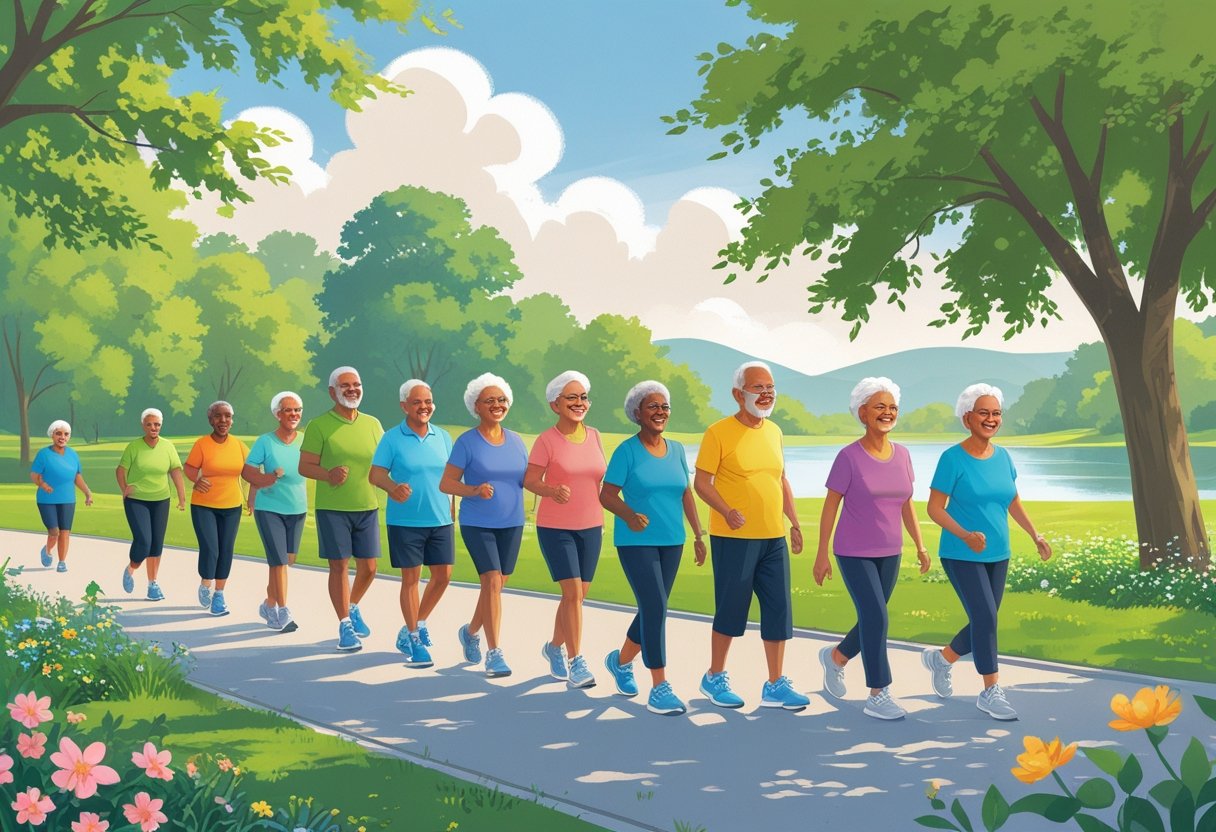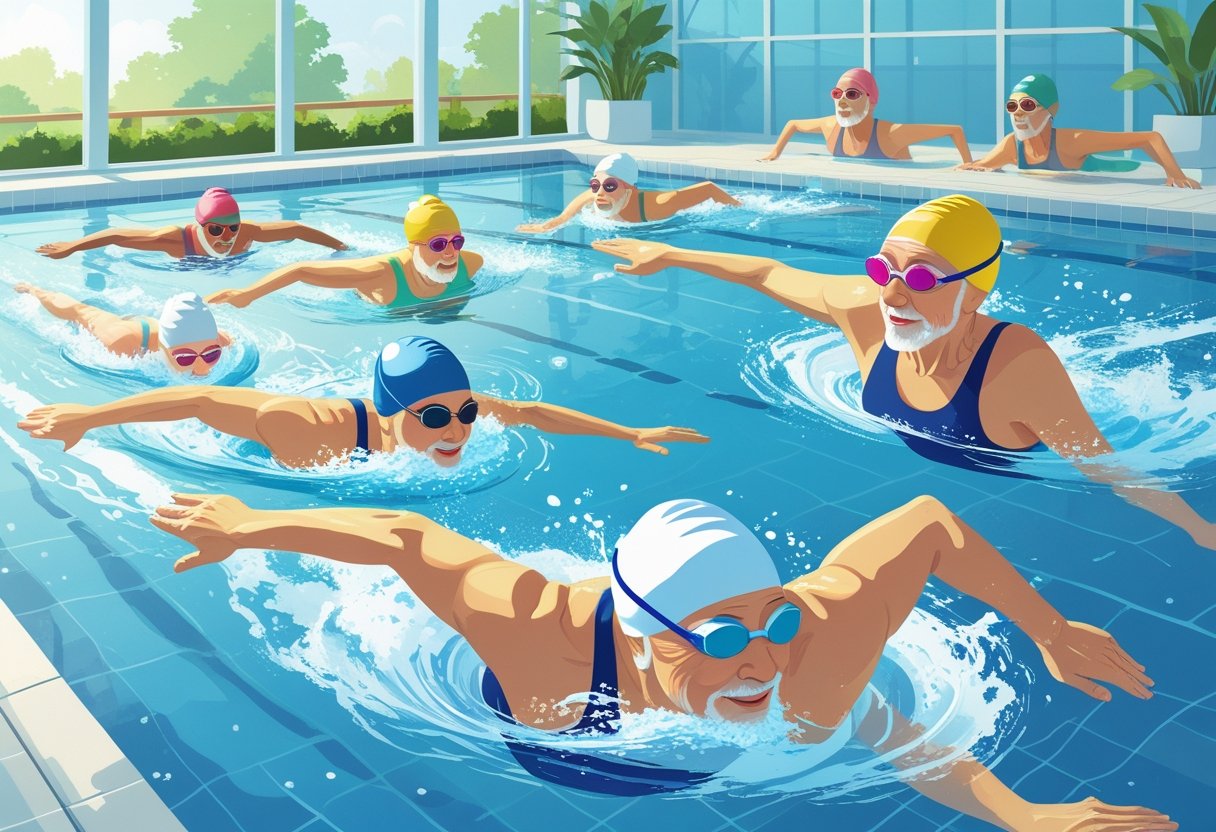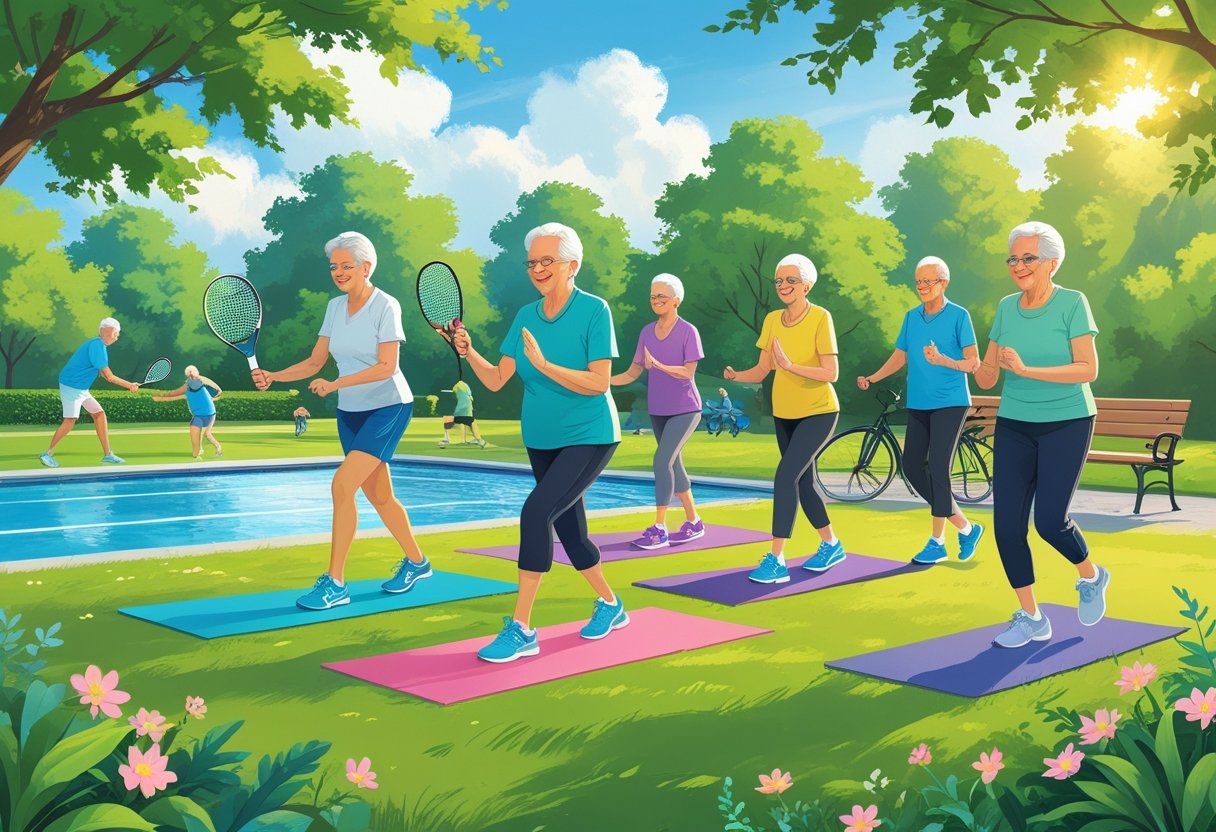Staying physically active only gets more important as we get older, but finding activities that actually feel good—without wrecking your joints—can be tricky. The right sports and fitness routines help keep your heart ticking, muscles working, and honestly, just make life more enjoyable as the years go by.
Low-impact activities with solid cardio benefits and a low risk of injury let people stay fit and independent longer. The trick is picking options that get your whole body moving, work on flexibility and balance, and can be tweaked as your body changes.
1) Walking: Low-impact and accessible, promotes cardiovascular health.

Walking is about as simple as it gets, which is probably why so many people stick with it as they age. No fancy gear, no gym fees, no complicated moves—just lace up and go.
This low-impact exercise is easy on the joints but still gets your heart pumping and blood moving. Brisk walking, in particular, can match the heart benefits of tougher workouts, which is pretty encouraging.
It helps lower blood pressure and cuts down the risk of heart disease. The heart actually gets stronger and more efficient with regular walks—who doesn’t want that?
Walking is easy to scale up or down, depending on how you’re feeling. Start slow and short, then add speed or distance as you get comfortable.
It’s a straightforward way to hit that 2.5 hours of moderate weekly exercise experts keep talking about. And you can do it almost anywhere—sidewalks, parks, even a treadmill if the weather’s bad.
2) Swimming: Full-body workout that is gentle on joints

Swimming is a real winner for older adults—it works every major muscle group at once, but the water supports your body, so it feels much easier than it looks.
When you’re neck-deep, the water takes off up to 90% of your body weight. That means almost no pounding on your joints, bones, or muscles.
If you’ve got arthritis or cranky knees, swimming lets you move and even push yourself a bit without the pain of land-based workouts.
The water’s resistance gives your heart, arms, legs, and core a challenge, all while keeping things gentle. You can switch up strokes, too—freestyle for endurance, backstroke for your back, breaststroke for legs and chest. It doesn’t get boring.
And if laps aren’t your thing, there’s water walking, aqua jogging, or resistance moves. The pool is a safe space—no worries about tripping or falling, which is a relief as balance changes with age.
3) Tennis: Enhances agility and coordination, boosts longevity
Tennis keeps you on your toes, literally. You’re moving in every direction, reacting fast, and keeping your balance—all at once.
It’s not just about running around; the hand-eye coordination and quick thinking sharpen your brain, too.
Some research even suggests tennis players live almost a decade longer than folks who skip exercise. That’s a huge bonus, right? Tennis works your heart and keeps your blood flowing, plus all the stop-and-go movements help maintain bone strength and joint flexibility.
You don’t have to play like a pro, either. It’s easy to dial it back or play doubles to keep things manageable but still get the benefits.
Tennis also has a big mental and social side. Processing the game, reacting, and chatting with partners—it’s all good for your brain and mood. The camaraderie keeps people coming back, which makes a big difference in sticking with exercise long-term.
4) Cycling: Improves cardiovascular fitness without joint stress
Cycling is another fantastic way to get your heart in shape while sparing your joints. If running feels rough, a bike can be a real game changer.
Regular rides strengthen your heart and boost circulation. Cyclists tend to have lower risks of heart disease and stroke—pretty motivating stats if you ask me.
It helps lower blood pressure and can improve cholesterol numbers, all without the pounding your knees or hips might take from other sports.
You’re in control of the intensity. Start slow, add time or resistance as you build strength—no pressure to go all-out from day one.
The smooth pedaling motion is easy on the joints, making it a solid pick for anyone with arthritis or old injuries. Plus, it burns calories and builds leg muscle, which helps with weight management.
Indoor bikes are always an option, so you don’t have to skip workouts when the weather’s awful. That flexibility makes it easier to stick with cycling year-round.
5) Yoga: Increases flexibility, balance, and mental well-being.
Yoga offers a lot for older adults—gentle movement, breathing, and a bit of calm in a busy world. It addresses flexibility, balance, and mental health, which all become more important with age.
Stretching and holding poses gradually loosen up muscles and joints, making it easier to move and less likely to feel stiff.
Many yoga poses challenge your balance and strengthen your core, which is huge for preventing falls. And let’s be honest, nobody wants to worry about falling as they get older.
Mentally, yoga is a proven stress-buster. The breathing and meditation parts help you manage anxiety, sleep better, and just feel more centered.
Yoga is kind to joints, too. You can modify almost every pose, so it works for people with all sorts of limitations. The gentle approach means you can keep practicing for years, even as your body changes.
How Physical Activity Supports Healthy Aging
Moving regularly gets more important with age. It helps right away—lower blood pressure, better sleep—and also protects against chronic diseases. Staying active is one of the best ways to keep your independence and quality of life up.
Benefits for Cardiovascular Health
Exercise strengthens your heart and keeps blood flowing. It lowers resting blood pressure and cuts heart disease and stroke risk.
Aerobic activities can raise your “good” cholesterol and lower the bad stuff, which helps keep arteries clear and blood moving smoothly.
Key cardiovascular improvements include:
- Lower blood pressure during rest and activity
- Improved heart rate variability
- Enhanced oxygen delivery to tissues
- Reduced inflammation markers
Exercise helps keep blood sugar in check, which protects your blood vessels. Even moderate activity, like brisk walks, makes a real difference when you stick with it.
Your heart becomes more efficient with regular movement, so you don’t get tired as easily and have more energy for daily life.
Maintaining Strength and Mobility
Muscle loss is a normal part of aging, but staying active slows it down a lot. Strength training keeps muscles and bones strong, lowering the risk of fractures.
Physical activity supports:
- Bone health through weight-bearing exercises
- Balance improvement reducing fall risk
- Flexibility maintenance preserving range of motion
- Joint mobility preventing stiffness
Resistance or impact exercises trigger bone growth and slow bone loss. Balance work is especially important as you get older—better coordination means safer, more confident movement.
Flexibility routines keep joints limber and help with everyday tasks like reaching or bending. It’s all about making daily life easier and safer.
Mental Wellbeing and Cognitive Function
Physical activity is a natural mood booster. It relieves stress and anxiety by releasing feel-good chemicals, and it helps you sleep better, which is huge for mental clarity.
Exercise increases blood flow to the brain, bringing oxygen and nutrients that support memory and thinking. This might even help protect against age-related decline.
Mental health benefits include:
- Reduced symptoms of depression and anxiety
- Improved sleep patterns and quality
- Enhanced mood stability
- Better stress management
Group activities add a social element that fights loneliness and builds community. That support can be just as important as the exercise itself.
Staying active also boosts confidence and independence, which makes it easier to stick with healthy habits. It’s a positive cycle that builds on itself.
Tips for Making Exercise Safe and Enjoyable as You Age
Adapting your workouts and focusing on injury prevention become more important after 50. Start slow, listen to your body, and tweak activities as needed to keep exercise both safe and sustainable.
Adapting Routines for Individual Needs
Begin with 10-15 minutes of easy movement, then bump it up by about 5 minutes each week. This gradual approach helps your body adjust and keeps you from overdoing it.
Pick activities that fit your needs. If your joints are stiff, swimming or cycling beat out high-impact sports. Worried about balance? Try chair-based or wall-supported exercises.
Consistency matters more than intensity. Exercising 3-4 times a week gets better results than going all out once in a while. Don’t forget rest days—they’re key for recovery.
Always check with your doctor before starting something new. They can flag any issues and suggest tweaks to keep you safe, like avoiding certain moves or monitoring your heart rate.
Use supportive shoes and consider resistance bands instead of heavy weights for strength training. Little equipment changes can make exercise more comfortable and safer.
Injury Prevention Strategies
Warm-up routines don’t have to be complicated. Just 5-10 minutes of light walking, some easy stretching, or even a few arm circles can get blood moving and help your muscles wake up a bit. That simple prep work really does make a difference for injury risk.
Staying hydrated matters more than most folks realize. If you’re over 50, it’s smart to sip water before, during, and after you exercise—especially when it’s hot out. Nobody wants to deal with cramps or getting overheated halfway through a walk.
Listening to your body isn’t just a cliché—it’s honestly the best way to avoid trouble. If you feel sharp pain, get dizzy, or notice chest discomfort, just stop right then. And if your muscles are still sore after two days, maybe it’s time to ease up a bit next time.
Mixing up your activities helps too. Try walking one day, swimming the next. Cross-training keeps things interesting and your muscles happier since you’re not hammering the same ones every day.
It’s worth paying attention to your surroundings as well. Take a quick look at the weather, throw on the right clothes, and pick well-lit paths if you’re heading outside. Little choices like that can help you steer clear of unnecessary accidents.






